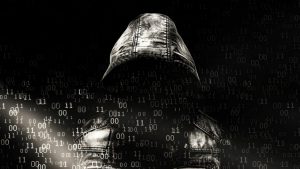The vast landscape of the internet holds hidden corners that are not easily accessible through traditional search engines. Among these secretive realms is the Dark Web, a part of the internet that is intentionally hidden and requires special tools to access. Links to dark web sites provide a gateway to a world shrouded in mystery and intrigue, where anonymity and privacy are paramount.
One of the most well-known ways to access the Dark Web is through the Tor browser, which enables users to browse the internet anonymously by routing their connections through a network of volunteer-operated servers. By using Tor, individuals can access websites with the .onion domain, which are not indexed by standard search engines like Google or Bing.
One example of a popular dark web site is the Hidden Wiki, a frequently updated directory of links to various websites on the Dark Web. The Hidden Wiki serves as a starting point for users looking to explore the depths of the hidden internet, providing links to sites offering everything from forums and marketplaces to whistleblower platforms and privacy tools.
Dark web marketplaces are another notable aspect of the hidden internet, where users can buy and sell a wide range of goods and services, often using cryptocurrencies like Bitcoin for transactions. These marketplaces serve as hubs for illicit activities such as drug trafficking, firearms sales, and stolen data, but they also host legitimate products and services that may not be readily available on the surface web.
One example of a popular dark web marketplace is Silk Road, which gained notoriety for its role in facilitating the sale of drugs and other illegal goods. While Silk Road was eventually shut down by law enforcement authorities, its legacy lives on through other marketplaces that have since emerged to cater to the demand for illicit goods in the hidden corners of the internet.
In addition to marketplaces, the Dark Web is home to a variety of forums and communities where users can discuss a wide range of topics, from cybersecurity and privacy to hacking and whistleblowing. These forums provide a platform for individuals to share information and collaborate on projects in a space that offers a higher degree of anonymity than the surface web.
Whistleblower platforms like SecureDrop allow individuals to submit anonymous tips and information to journalists and media organizations, enabling the disclosure of sensitive information while protecting the identity of the source. These platforms play a crucial role in promoting transparency and accountability by allowing whistleblowers to come forward without fear of reprisal.
While the Dark Web is often associated with illicit activities and nefarious actors, it also serves as a refuge for individuals seeking privacy and protection from surveillance. Journalists, activists, and dissidents in repressive regimes may turn to the Dark Web to communicate securely and share information without the risk of censorship or monitoring.
Furthermore, the Dark Web is home to a growing number of sites that provide tools and resources for enhancing online privacy and security. Services like ProtonMail offer encrypted email accounts, while VPN providers like NordVPN allow users to mask their IP addresses and browse the internet anonymously. These tools empower individuals to take control of their digital privacy and protect themselves from online threats.
In conclusion, links to dark web sites open a window into a hidden world that exists alongside the familiar domains of the surface web. While the Dark Web may be shrouded in secrecy and controversy, it offers a unique space for individuals to explore, communicate, and transact in ways that prioritize anonymity and privacy. By understanding the nuances of the Dark Web and its diverse offerings, users can navigate this hidden landscape with caution and curiosity, unlocking new possibilities in the depths of the internet.








